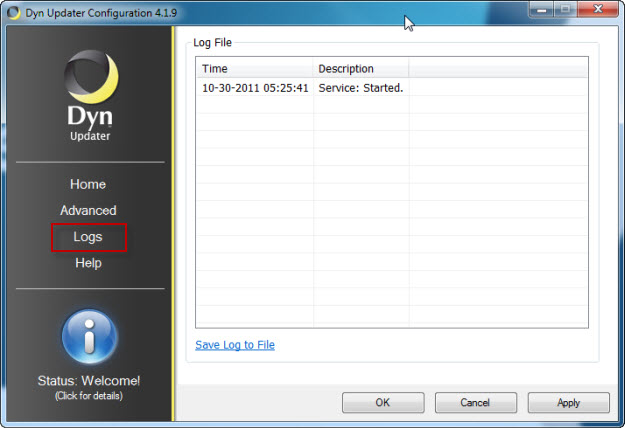

- #Dyn updater linux command line install#
- #Dyn updater linux command line update#
- #Dyn updater linux command line password#
- #Dyn updater linux command line mac#
For that Open up the terminal and issue these commands one by one.
#Dyn updater linux command line update#
There’s a very nice piece of software called Dynsite, which continues to be maintained by its creator Noel Danjou. Download and Set UP DUC (Dynamic Update Client). One of our clients has written a nice java-based client that runs on Linux and can be downloaded from their project site HERE. Please go HERE for further details.įor Linux, Sourceforge provides an excellent update client for Linux called ddclient. We currently provide our own custom updater for Mac-based servers (OS 10), which can be downloaded directly from our system. Zoneedit customer rjwhite created a perl script - details at
#Dyn updater linux command line mac#
The following are the ones we are currently recommending: Dynamic DNS Mac Systems We currently provide our own custom updater for Mac-based servers (OS 10), which can be downloaded directly from our system. There are dozens or more different options available for software based dynamic updates. If your router does not include ZoneEdit or allow you to enter your own parameters, you will want to use a software-based updater.
#Dyn updater linux command line password#
Password (this should be your dynamic token mentioned earlier).The format is as expected for a NIX config the hash. It is looked at automatically if inadyn is called without any command line options.

The default configuration file name is '/etc/nf'. Here are the basic parameters you will need: The file name that contains inadyn command options exactly as specified in the command line syntax (adds to those already present in the cmd line). Others allow you to enter the settings for your dynamic server. Some of these include ZoneEdit/easyDNS as one of their options, and you need only select it from the menu they provide. This can be very convenient, as the router is always the first place the IP address change makes itself known. Many routers have an option to enable dynamic updates. There are a number of different ways to make dynamic updates and they are all dependent on your local setup. Please keep in mind that this command works only on Debian-based distributions.
#Dyn updater linux command line install#
You can also install it by executing sudo apt-get install ddclient in a terminal. If your Linux distribution does not have a recent version of ddclient, you can download the tar file here. Setting Up Your System To Use Dynamic DNS The ddclient is an open-source dynamic IP updater client written in Perl. Once you've set up your Dynamic DNS service correctly both within your ZoneEdit account and within your router/dyn client (see below), you should see updates within your DNS Settings page: We only allow the use of the token to avoid exposing your password. Please keep in mind that ddclient doesn't automatically start when your system boots, but this can be scheduled using either cron or systemd.NOTE: Dynamic tokens must be entered in place of your account password, as many updaters only use clear text. You can check its status with sudo service ddclient status and you can stop it with the command sudo service ddclient stop. In order to turn on the updater, please execute the command sudo service ddclient start in a terminal. It supports multiple protocols and services, and it has native. If you're an Umbrella customer, this is the name of the Network you've enabled Dynamic updates for in the Configuration. If you have spaces in your network label, replace them with an underscore ( _ ) Dyndnsc is a command line client for sending updates to dynamic dns (ddns, dyndns) services. You can find the network label in the Settings Tab of the OpenDNS Dashboard.


 0 kommentar(er)
0 kommentar(er)
